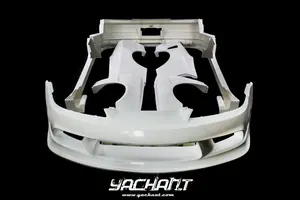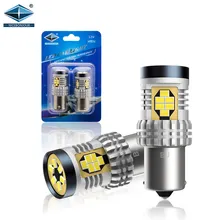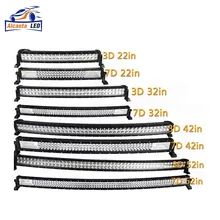A bumper cover, also called a bumper fascias or bumper skin, is an integral component of a car's external design and safety features. Usually, plastic, fiberglass, or a mix make a rear and front bumper cover. The primary purposes of a bumper cover are to increase aerodynamics, shield a car's front and rear ends from minor collisions, and enhance the vehicle's overall look. Browse all the available bumper covers on Alibaba.com.
Bumper cover materials
Thermoplastic is one substance that is frequently utilized for bumper covers. Thermoplastic polymers—like polypropylene and polyethylene—are recommended due to their strength, weight, and ease of molding. Manufacturers frequently choose these materials because they are inexpensive for large-scale production and highly resist impact and deformation. Thermoset plastic is another material for a car bumper cover. Unlike thermoplastics, thermoset plastics are created through a chemical curing process that yields a stiff and long-lasting final product. Certain materials are more durable and stiff than others, such as fiberglass-reinforced composites, making them appropriate for use when impact resistance is essential.
Manufacturers of high-end and performance vehicles occasionally use innovative materials like carbon fiber or reinforced plastics. The vehicle's exceptional performance results from the strength of carbon fiber and its low weight. However, using these high-performance materials usually comes with a higher production cost.
Uses of bumper covers
A front and rear bumper of cars are susceptible to damage. The primary purpose of this car cover is to serve as a barrier, keeping outside impacts and collisions from damaging the underlying bumper structure. These covers offer a strong defense against minor dings, scratches, and other damage the car might encounter daily. They are frequently made of sturdy materials like fiberglass or plastic.
Bumper covers shield an automobile from harm and greatly enhance its appearance. The covers are designed by the manufacturers to blend in with the vehicle's overall exterior design, improving its visual appeal and providing a unified look. Bumper covers are made with great attention to color, texture, and shape to enhance the vehicle's overall appearance and complement its style. Aerodynamics also heavily relies on bumper covers. Because of the form and construction of this type of cover, it is specifically designed to fit a car bumper. The vehicle's overall aerodynamic efficiency increases as air resistance decreases due to lightweight. Reducing drag while driving improves vehicle performance and stability while increasing fuel efficiency.
How to choose bumper covers
Finding out the brand and model of the car is the first thing to do, as bumper covers are made to fit specific car models. This maintains the intended safety features of the bumper and guarantees a proper, secure fit. Knowing the car model and having the right cover also ensures seamless bumper cover repair. Bumper covers can require replacement or some repair work over the long run. Knowing what car model and bumper cover it is will help streamline the repair work. Also, take into account the material of the bumper cover. Carbon fiber, fiberglass, and plastic are examples of everyday materials. Every material has unique properties, including weight, flexibility, and durability.
Specific covers have pre-designed designs, while others can be customized to fit a person's tastes. Hence, analyzing the bumper cover's design and style is crucial. Another factor worth considering is the bumper cover's intended use. Look for a cover with features like extra impact-absorbing elements or reinforced corners for even more protection.










































 浙公网安备 33010002000092号
浙公网安备 33010002000092号 浙B2-20120091-4
浙B2-20120091-4